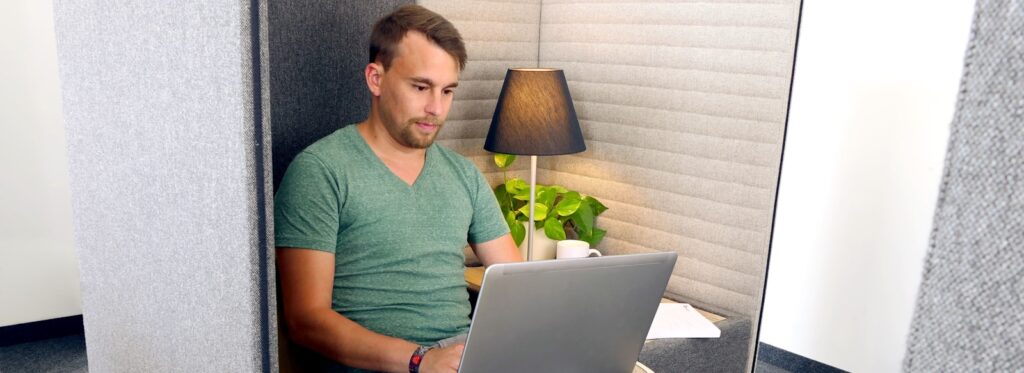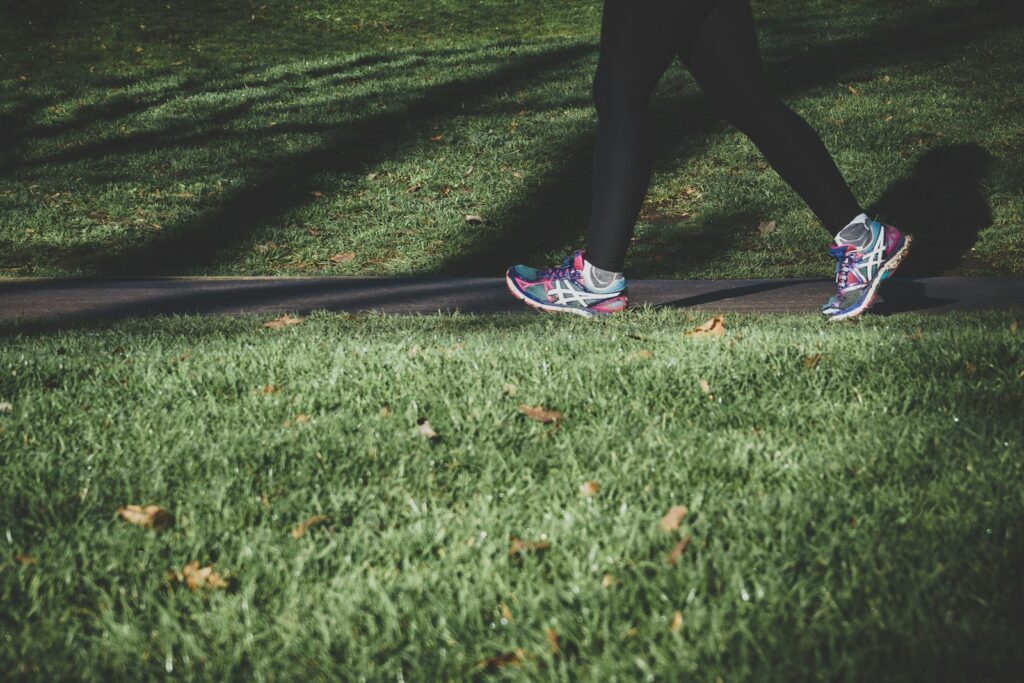
Many of us find ourselves perpetually anchored to chairs, whether it’s the ergonomic masterpiece at our home office, the plush seat of our car during a commute, or the inviting cushions of our couch for an evening unwind. This seemingly innocuous habit, however, is a silent saboteur, relentlessly chipping away at our well-being. Far from being a mere inconvenience, prolonged sitting has emerged as a significant public health concern, silently escalating our risk for a cascade of adverse health outcomes that extend far beyond a stiff neck or tired eyes.
The reality is stark and often surprising: the hours we spend in a sedentary state can profoundly impact our physical and mental health, even for those who diligently carve out time for regular exercise. Leading medical experts and extensive research are increasingly shining a spotlight on what many are now calling “the new smoking” – a lifestyle factor with far-reaching consequences that demand our immediate attention. Understanding these hidden dangers is the first critical step toward reclaiming our vitality and building a healthier future, one movement break at a time.
This in-depth exploration will delve into the profound and often overlooked health risks associated with sitting all day, drawing on the latest evidence and expert insights. We will uncover how a sedentary lifestyle can dramatically affect various bodily systems, from our cardiovascular health to our mental well-being, and even our cognitive function. Prepare to understand the full scope of this modern health challenge, as we embark on a journey to identify the silent threats lurking in our everyday routines.
1. **Increased Mortality Risk**It’s a sobering thought, but the sheer volume of time many of us spend seated each day can quite literally shorten our lives. Studies have now definitively linked prolonged sedentary behavior to an elevated risk of premature mortality, a concept that underscores the profound impact of our daily habits. This isn’t just about feeling out of shape; it’s about a fundamental increase in vulnerability to various diseases that can ultimately lead to an earlier demise.
Dr. Callie M. Davies, a sports medicine physician at Mayo Clinic in Arizona, explicitly states, “Sitting for most of the workday, an average of eight hours, raises your mortality risk, meaning you have a higher chance of dying earlier than expected.” This expert perspective is reinforced by compelling research. A 2023 study in the Journal of American Medical Association found that “people who sit for more than 8 hours daily have a 62% increased risk of premature mortality compared to those who sit less than 4 hours.” Such statistics paint a vivid picture of the silent danger posed by our chairs.
The implication is clear: even if we feel healthy and active outside of our sitting hours, the cumulative effect of prolonged inactivity can be devastating. This isn’t a problem that can be entirely ‘exercised away’ with a single intense workout. The consistent, daily pattern of being sedentary contributes significantly to this heightened risk, urging us to reconsider how we structure our days and embrace more movement.
Read more about: Beyond the Bulk: Chris Hemsworth’s Real Health Journey and the Truth About ‘Harmless’ Supplements
2. **Elevated Risk of Type 2 Diabetes**Beyond the general threat to our lifespan, prolonged sitting specifically zeroes in on our metabolic health, dramatically increasing our susceptibility to type 2 diabetes. This chronic condition, characterized by the body’s inability to effectively use or produce insulin, is directly influenced by our daily activity levels. When we sit for extended periods, our body’s processes for managing blood sugar become less efficient, paving the way for metabolic dysfunction.
Dr. Davies highlights this critical connection, noting that “Studies that combine many research results show that prolonged sitting — more than eight hours a day — is linked to more than double the risk of developing type 2 diabetes.” This isn’t a minor increase; it’s a profound leap in risk that underscores the importance of breaking up sedentary time. The body’s ability to regulate insulin and glucose is hampered, making it more challenging to maintain healthy blood sugar levels.
The good news, however, is that this is largely a preventable risk. Simple changes in our daily routine can significantly alter this trajectory. By incorporating regular movement, even in small bursts, we can help our bodies process sugars more effectively and reduce the strain on our insulin-producing systems. Awareness of this specific danger empowers us to make healthier choices and protect ourselves against a prevalent and serious illness.
Read more about: The Domesticated Dog: A Comprehensive Examination of Its Origins, Evolution, and Profound Influence on Human Society
3. **Cardiovascular Strain and Heart Disease**Our hearts are the tireless engines of our bodies, and prolonged sitting places an immense and unnecessary burden upon them. The continuous lack of movement that characterizes a sedentary lifestyle significantly compromises cardiovascular health, increasing the risk of serious heart-related events. It’s a silent threat that can manifest in various ways, from elevated blood pressure to arterial blockages, all stemming from reduced activity.
Dr. Davies emphasizes the severity of this risk, stating, “Studies have shown that sitting for more than 6 to 8 hours a day is associated with a 125% to 150% increase in risk of cardiovascular events.” This substantial increase is a powerful indicator of how detrimental inactivity can be. The mechanisms behind this include increased blood pressure, higher cholesterol levels, and reduced overall circulation. When blood flow is sluggish, the heart has to work harder, and harmful substances are more likely to accumulate in the arteries.
Furthermore, a significant concern with prolonged sitting is the increased likelihood of blood pooling in the legs, which can lead to dangerous blood clots. Dr. Davies draws a clear analogy: “If you imagine you’re sitting on a plane, what do we tell patients? We tell them to get up — because we don’t want blood pooling in the legs and causing a clot. Whether you’re sitting on a plane or at your desk, it should be no different.” This vivid comparison highlights a serious, potentially life-threatening consequence of sustained inactivity.
Recent research from the American Heart Association (2024) further underscores this, finding that “just two hours of sitting a day could reduce the effectiveness of your good cholesterol by up to 20%.” This makes it clear that prioritizing movement is vital for the ongoing health and efficiency of our cardiovascular system.
Read more about: 14 Wild Ways Cycling Is More Than Just a Ride (Plus, How You Can Join the Fun!)

4. **Muscle Weakness and Gluteal Amnesia**Beyond the internal organ systems, prolonged sitting visibly takes a toll on our musculoskeletal health, particularly affecting our muscle tone and strength. One of the most common physical manifestations of a sedentary lifestyle is the weakening of key muscle groups, especially those in our core and lower body. This phenomenon has even earned a colloquial, yet accurate, term: “gluteal amnesia.”
Dr. Davies explains, “You tend to develop tight hip flexors and weak glutes as well as weaker core and supportive muscles.” When we remain seated, our body is not actively engaged in maintaining posture; instead, the chair provides the support. This passive state allows our glutes to become underutilized, effectively “forgetting” how to activate properly. A 2023 study in the Journal of Physical Therapy Science showed that “people who sit for 6+ hours daily experienced up to 24% reduction in glute muscle activation.”
This weakening of the glutes and core muscles doesn’t just affect our appearance; it has significant implications for our overall physical function, balance, and athletic performance. Weak glutes can contribute to other issues like back pain and knee problems, creating a cascade of musculoskeletal complaints. Reversing this “amnesia” requires conscious effort to engage these muscles, even through simple standing or micro-movements throughout the day.
5. **Spinal Misalignment and Chronic Back Pain**For many, the most immediate and palpable consequence of sitting all day is the insidious onset of back pain. This isn’t just an occasional ache; for millions, it transforms into chronic discomfort, significantly impacting quality of life. The human spine is designed for movement and support, and prolonged, static sitting places unnatural stress on its intricate structures, leading to misalignment and pain.
Dr. Davies notes, “Poor sitting posture contributes to fatigue and lower back pain, especially if people slump forward instead of sitting with proper alignment.” When we slouch or maintain a static, poor posture, the natural curves of the spine are compromised, putting undue pressure on the intervertebral discs and surrounding muscles. A 2024 review in The Spine Journal revealed that “prolonged sitting increases intradiscal pressure by up to 40% compared to standing.”
This constant, elevated pressure can accelerate the wear and tear of spinal discs, contributing to stiffness and chronic pain. The notion that “sitting is the new smoking” gains particular relevance when considering spinal health. Just as smoking harms the lungs over time, chronic sitting gradually deteriorates spinal integrity. It’s a cumulative effect, meaning that each hour spent slumped in a chair adds to the potential for long-term spinal issues. Understanding this direct link empowers us to adopt more dynamic sitting habits and actively protect our backs.
Read more about: Jennifer Aniston’s Ageless Blueprint: Unpacking Her Science-Backed Wellness Routine for Enduring Vitality and a Thriving Career

6. **Weakened Legs and Tight Hips**The impact of prolonged sitting extends significantly to our lower limbs, leading to a detrimental combination of weakened leg muscles and chronically tight hip flexors. Our legs and hips are fundamental to mobility, balance, and overall physical strength, yet a sedentary lifestyle can severely compromise their function. This imbalance creates a host of issues, from reduced flexibility to increased risk of injury.
As previously mentioned by Dr. Davies, “You tend to develop tight hip flexors and weak glutes,” but this extends to the entire leg structure. When you sit, your leg muscles become inactive, losing tone and strength over time. Simultaneously, your hip flexors, the muscles at the front of your hips that allow you to lift your knees, remain in a shortened position for hours on end. This sustained shortening causes them to become tight and stiff.
Research published in the International Journal of Sports Physical Therapy (2023) further substantiates this, demonstrating that “people with desk jobs had 30% tighter hip flexors than those with active jobs.” This tightness can restrict range of motion in the hips, affecting everything from walking to bending. Over time, these muscle imbalances can lead to poor posture, stiffness, and significantly decreased mobility, making everyday movements feel challenging and uncomfortable.
Read more about: Sinking 12000 Miles: The WW2 Aircraft Carrier That Somehow Survived

7. **Negative Impact on Mental Health: Anxiety and Depression**The consequences of prolonged sitting are not confined to the physical realm; they cast a significant shadow over our mental and emotional well-being. A growing body of evidence strongly suggests a compelling link between sedentary behavior and higher rates of mental health challenges, specifically anxiety and depression. Our physical activity levels are inextricably tied to our psychological state, and a lack of movement can have profound negative implications.
Dr. Davies states, “There’s a strong link between sedentary behavior and higher rates of anxiety and depression.” She explains that “That’s partly because movement helps release endorphins,” which are natural mood boosters. When we are physically inactive, we miss out on these crucial neurochemical benefits that contribute to feelings of happiness and reduced stress. The absence of regular physical exertion can leave us more vulnerable to feelings of unease and sadness.
Moreover, the rise of remote work, often leading to increased sedentary hours, exacerbates this issue by reducing social interaction. Dr. Davies points out, “as more people are working from home, it can mean less social interaction — which is a key factor in mental well-being.” Human connection and community engagement are vital for mental health, and a lifestyle that minimizes movement outside the home can inadvertently diminish these essential interactions. A large-scale 2024 meta-analysis in JAMA Psychiatry found that “people who engage in regular movement throughout the day reported 35% lower rates of depression and anxiety compared to sedentary individuals.” This makes it clear that prioritizing movement is not just good for the body, but indispensable for a healthy mind.
Read more about: Social Media’s Double Impact on Mental Health: Connecting, Isolating, and How to Find Balance

8. **Poor Digestion**The dangers of prolonged sitting reach into even the most fundamental bodily functions, extending to how effectively our digestive system operates. It’s a surprising, yet significant, impact that can lead to discomfort and long-term issues. When we spend hours anchored to a chair, our internal processes, including digestion, simply don’t function at their optimal pace.
Recent research highlights this direct link, with a 2023 study in the American Journal of Gastroenterology showing that “prolonged sitting slows transit time by up to 30% and increases bloating in healthy adults.” This means that food moves through your system at a significantly reduced rate, giving it more time to ferment and cause unpleasant symptoms. It’s a clear indication that our body needs movement to keep everything flowing smoothly.
This sluggishness can translate into a range of digestive complaints, from frustrating constipation to persistent bloating and general gastrointestinal discomfort. Essentially, sitting doesn’t just make your back hurt; it makes your digestive system lethargic. By understanding this often-overlooked consequence, we can appreciate another crucial reason to break free from prolonged periods of inactivity and give our gut the movement it needs to thrive.
Having explored the extensive array of risks posed by a sedentary lifestyle, from premature mortality to digestive woes, the burning question remains: how do we counteract these silent threats? The good news is that mitigating these dangers doesn’t require a complete overhaul of your life or an intense gym regimen. Instead, it’s about integrating small, conscious shifts into your daily routine, embracing “micro-movements” that collectively create a profound positive impact on your health. Let’s dive into some practical, evidence-based strategies that can help you transform your sedentary habits into a more dynamic and vibrant way of living.
Read more about: Unveiling the Hidden Saboteurs: 12 Foods and Drinks Secretly Wrecking Your Sleep Quality

9. **Take Frequent Breaks – The 20-20 Rule**One of the simplest yet most effective ways to combat the harms of prolonged sitting is to implement the “20-20 rule.” This straightforward strategy encourages you to take a short, intentional break every 20 minutes, even if it’s just for a minute or two. It’s about consciously interrupting those long bouts of inactivity, sending a clear signal to your body that it’s time to briefly reset and re-engage.
The benefits of these frequent, short breaks are well-documented and far-reaching. The Mayo Clinic’s 2024 workplace health guidelines explicitly recommend this approach, underscoring its efficacy. They show it significantly helps your circulation, ensuring blood flows freely and preventing the pooling that can lead to clots. Moreover, these micro-breaks are proven to reduce back pain by an impressive 19%, directly addressing one of the most common complaints associated with desk work.
Beyond the physical advantages, consistently breaking up your sitting time helps prevent that unsettling feeling of being “glued” to your chair, fostering a greater sense of awareness and control over your body. Setting a simple timer on your phone or computer can be an invaluable tool to remind you to stand, stretch, or walk for a minute, effectively breaking the cycle of sedentary behavior without disrupting your workflow.
Read more about: Celine Dion’s Unprecedented Revelation: The True Story Behind 14 Years of Silence and Her Stiff Person Syndrome Battle

10. **Get Moving – Simple, Easy Workouts**You don’t need to commit to grueling gym sessions to experience the profound benefits of movement. The key lies in incorporating simple, easy workouts throughout your day, weaving physical activity into the fabric of your routine without needing special equipment or extensive time commitments. These aren’t about breaking a sweat, but about activating muscles and promoting circulation.
Consider integrating exercises like squats, lunges, or even standing calf raises right at your desk or during short breaks. These small bursts of activity can make a remarkable difference. A 2023 study in the Journal of Occupational Health found that “micro-workouts (1-2 minutes) throughout the workday improved metabolic markers by 17% compared to continuous sitting.” This scientific evidence clearly supports the power of brief, consistent movement.
Doing these little movements throughout the day provides a multitude of benefits. They help strengthen your legs and glutes, combating the “gluteal amnesia” we discussed earlier. Furthermore, these micro-exercises give a gentle boost to your metabolism, helping your body burn calories more efficiently, and significantly contribute to improving your overall posture by engaging your core and supportive muscles.
Read more about: 9 Expensive Pet Care Mistakes That Could Be Harming Your Dog: A Lifehacker’s Guide to Smarter Pet Ownership

11. **Use a Standing Desk**For those whose work mandates long hours at a computer, a standing desk can be a game-changer in the fight against sedentary harm. These versatile workstations allow you to seamlessly switch between sitting and standing postures, providing a dynamic alternative to static seating. It’s not about standing all day, but about introducing variety and movement into your work environment.
The research strongly supports the advantages of this flexibility. A 2024 study published in Occupational & Environmental Medicine showed that “alternating between sitting and standing every 30 minutes reduced back pain by 32% and improved productivity by 14%.” These are significant improvements that speak volumes about the positive impact of adjustable workstations on both physical comfort and cognitive function.
Standing more often helps your spine stay aligned naturally, reducing the undue pressure on discs that prolonged sitting can cause. It gives your body a much-needed break from the constant, static pressure of sitting, encouraging better circulation and muscle engagement. As Dr. Davies wisely pointed out, the key is to “mix it up” – alternating between sitting, standing, and walking ensures the most sustainable and healthiest approach.
Read more about: Fueling Your Savings: 12 Smart Lifehacker Strategies to Drastically Improve Your Car’s Gas Mileage Now

12. **Stretch!**Stretching is an often-underestimated tool in mitigating the physical tolls of prolonged sitting, yet it offers immediate and tangible relief. The beauty of stretching is its accessibility; you can easily incorporate targeted stretches right at your desk, in a hallway, or even while watching TV on the couch. It’s about consciously lengthening muscles that become tight and stiff from inactivity.
Focus on the muscle groups most affected by sitting: your hamstrings, hip flexors, and back. The American College of Sports Medicine’s 2024 guidelines specifically recommend focused stretching for desk workers. They place particular emphasis on “opening your chest and shoulders, too, since sitting can make you slouch.” This holistic approach ensures you address the full spectrum of postural imbalances caused by prolonged inactivity.
Regular stretching helps to keep your muscles flexible and significantly reduces stiffness, counteracting the feeling of rigidity that often accompanies long periods of sitting. It also improves your range of motion, making everyday movements feel more fluid and less challenging. By taking just a few minutes each day to stretch, you actively work to restore your body’s natural alignment and ease tension.
Read more about: 5 Revolutionary 1970s Trends That Defined the Decade of Flower Power
13. **Get a Better Chair**While the ultimate goal is to sit less, for periods when sitting is unavoidable, the quality of your chair plays a crucial role in minimizing harm. Investing in an ergonomic chair designed to support your body’s natural contours is a vital step in protecting your spinal health and comfort. A good chair can make a world of difference in your daily well-being.
The most critical feature to look for is robust lumbar support, which helps maintain the natural curve of your lower back. Research from the Ergonomics Journal in 2023 found that “proper lumbar support reduced lower back pain by 34% among office workers.” This significant reduction underscores just how impactful the right chair can be in alleviating one of the most common symptoms of prolonged sitting.
Beyond traditional ergonomic chairs, consider alternative seating options that promote more dynamic movement. An exercise ball or a chair with built-in flexibility can help engage your core muscles even while seated, preventing them from becoming completely passive. And regardless of your chair choice, always strive to keep your back straight and maintain proper alignment – your muscles and spine will undoubtedly thank you later for this conscious effort.
Read more about: Fueling Your Savings: 12 Smart Lifehacker Strategies to Drastically Improve Your Car’s Gas Mileage Now

14. **Take Walks**When it comes to breaking the cycle of sedentary behavior, few strategies are as universally beneficial and accessible as taking short, brisk walks throughout your day. It’s the ultimate antidote to prolonged sitting, offering a cascade of health benefits that extend from physical vitality to mental clarity. This simple act of putting one foot in front of the other is a powerful health intervention.
Even just 10-15 minutes of walking can work wonders. It swiftly gets your blood flowing, effectively combating sluggish circulation and reducing the risk of blood pooling. These short walks are also excellent for relieving stress, providing a mental break, and delivering a welcome boost to your energy levels, particularly during those midday slumps. A landmark 2024 study in the British Journal of Sports Medicine unequivocally showed that “three 10-minute walks daily reduced cardiovascular risk by 25% among sedentary workers.”
These walks serve as a potent and enjoyable way to break up long periods of sitting, whether you step outside for some fresh air, pace around your office, or simply explore your home. It’s a testament to the profound impact of consistent, light physical activity – proving that you don’t need grand gestures to make significant strides in your health journey.
Read more about: 9 Expensive Pet Care Mistakes That Could Be Harming Your Dog: A Lifehacker’s Guide to Smarter Pet Ownership

15. **Drink More Water**While perhaps less intuitive than direct movement strategies, prioritizing adequate hydration is another foundational “quick fix” that powerfully supports your body in combating the adverse effects of prolonged sitting. Drinking plenty of water is an all-encompassing health booster, quietly enhancing numerous bodily functions that can become sluggish when you’re sedentary.
Firstly, proper hydration is absolutely essential for healthy digestion, directly counteracting the slowing of transit time associated with sitting. Water helps keep your digestive system efficient and regular. Furthermore, staying well-hydrated helps keep you alert and energized throughout the day, combating the mental fogginess and fatigue that prolonged sitting can induce. Research in the Journal of Human Nutrition and Dietetics (2023) demonstrated that “proper hydration improved cognitive performance by 14% and physical energy levels by 23%.”
Beyond these direct physiological benefits, integrating more water into your routine offers a practical, built-in mechanism for increasing movement: bathroom breaks! Each trip to the restroom is an opportunity to stand, walk a short distance, and momentarily break your sitting pattern. So, by simply reaching for that water glass more often, you’re not only nourishing your body internally but also giving yourself an easy, consistent excuse to move more and prevent bloating. It’s a win-win, indeed!
Read more about: Unveiling the Hidden Saboteurs: 12 Foods and Drinks Secretly Wrecking Your Sleep Quality
So, there you have it. The pervasive, often silent dangers of sitting all day are undeniable, but the solutions are wonderfully accessible and empowering. It’s time to stop letting your chair dictate your well-being. By embracing these evidence-based strategies – from frequent micro-breaks and simple desk exercises to mindful hydration and ergonomic support – you can reclaim control over your health. Start today, make those small, intentional changes, and witness how transforming your sedentary habits can lead to a stronger, more alert, and genuinely more energized you. Your body and mind will thank you for choosing movement, for choosing vitality, and for choosing to live your very best life, one active moment at a time.








